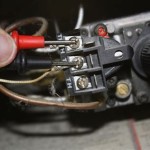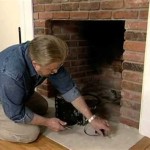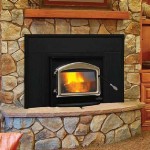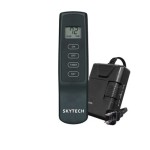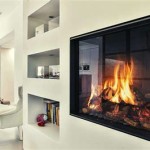```html
Most Energy Efficient Freestanding Electric Fireplaces
Electric fireplaces have emerged as a popular alternative to traditional wood-burning or gas fireplaces, offering a combination of aesthetic appeal, ease of use, and energy efficiency. Freestanding electric fireplaces, in particular, provide flexibility in placement and often require no permanent installation, making them an attractive option for renters and homeowners alike. However, understanding the energy efficiency of different models is crucial for making an informed purchase that balances comfort and cost savings. This article explores the key aspects of energy efficiency in freestanding electric fireplaces, providing insights into factors that impact energy consumption and highlighting strategies for selecting a high-performing unit.
Understanding Energy Consumption in Electric Fireplaces
The energy consumption of an electric fireplace is primarily determined by its heating power, measured in watts. A higher wattage typically indicates a stronger heating capability, but it also translates to greater energy usage. Most freestanding electric fireplaces operate between 750 and 1500 watts, with some models offering adjustable heat settings to allow users to control the level of warmth and, consequently, the energy consumption. The type of heating technology employed also plays a role. Some fireplaces utilize fan-forced convection heaters, which circulate warm air into the room, while others rely on infrared heating, which directly warms objects and people in its path. The efficiency of these technologies can vary depending on the design and construction of the fireplace.
Beyond the heating element, the visual flame effect also consumes energy. While LED technology has significantly reduced the power requirements for flame displays, it still contributes to the overall energy usage of the fireplace. The complexity of the flame effect, including the number of LEDs and the sophistication of the animation, can impact the amount of electricity needed to power it. Some models offer the option to operate the flame effect independently of the heating function, allowing users to enjoy the ambiance without consuming unnecessary energy on warmer days.
External factors also influence the energy efficiency of an electric fireplace. The size and insulation of the room being heated will affect how quickly the fireplace can reach the desired temperature and how often it needs to cycle on to maintain it. A poorly insulated room will lose heat more rapidly, requiring the fireplace to work harder and consume more energy. Similarly, the ambient temperature of the room will influence the fireplace's energy consumption. In colder climates, the fireplace will need to expend more energy to achieve and maintain a comfortable temperature.
Key Features of Energy-Efficient Freestanding Electric Fireplaces
Several features contribute to the energy efficiency of freestanding electric fireplaces. Selecting a model with these features can help minimize energy consumption and lower heating costs. One crucial aspect is the presence of a thermostat. A thermostat allows the user to set a desired temperature, and the fireplace will automatically cycle on and off to maintain that temperature. This prevents the fireplace from continuously running at full power, which can significantly reduce energy consumption. Programmable thermostats offer even greater control, allowing users to set different temperature schedules for different times of the day or week.
Another important feature is zone heating capability. Freestanding electric fireplaces are typically designed to heat a specific area or zone, rather than an entire house. By focusing the heat on a localized area, users can avoid the expense of heating rooms that are not in use. This is particularly beneficial in larger homes where only a portion of the living space is occupied at any given time. Zone heating can be a more energy-efficient alternative to central heating systems, which often heat the entire house regardless of occupancy.
LED technology is essential for energy-efficient flame effects. LEDs consume significantly less power than traditional incandescent or halogen bulbs, making them a cost-effective choice for creating realistic flame illusions. Look for models that utilize a high number of LEDs to create a vibrant and dynamic flame display without excessive energy consumption. Some fireplaces also offer adjustable flame brightness settings, allowing users to further reduce energy usage when a less intense flame effect is desired.
Remote control functionality is also beneficial for energy management. A remote control allows users to easily adjust the heat settings, flame brightness, and other features from a distance. This can be particularly useful for turning off the fireplace when leaving the room or adjusting the temperature without getting up. Some models even offer smart features that allow users to control the fireplace remotely via a smartphone or tablet, providing even greater flexibility and control over energy consumption.
Strategies for Maximizing Energy Efficiency
Even with an energy-efficient electric fireplace, certain strategies can further optimize energy consumption and reduce heating costs. Proper placement of the fireplace is crucial. Position the fireplace in an area of the room where it can effectively distribute heat without being obstructed by furniture or other objects. Avoid placing the fireplace near drafty windows or doors, as this can cause heat loss and increase energy consumption. Consider placing the fireplace against an interior wall to minimize heat loss to the outside.
Insulating the room can also significantly improve energy efficiency. Adding insulation to walls, ceilings, and floors can reduce heat loss and make it easier for the fireplace to maintain a comfortable temperature. Sealing any air leaks around windows, doors, and other openings can further prevent heat loss and improve overall energy efficiency. Caulking and weather stripping can be used to seal gaps and cracks, preventing drafts and reducing energy consumption.
Using the fireplace in conjunction with other heating sources can also be an effective strategy. During colder periods, the electric fireplace can be used to supplement the central heating system, allowing users to lower the thermostat setting on the central heating and save energy. In milder weather, the electric fireplace can be used as the primary heating source for a localized area, avoiding the need to turn on the central heating system at all. By strategically combining different heating sources, users can optimize energy efficiency and minimize heating costs.
Regular maintenance can also help ensure optimal performance and energy efficiency. Clean the fireplace regularly to remove dust and debris that can obstruct airflow and reduce heating efficiency. Inspect the heating element and fan for any signs of damage or wear. If necessary, replace any worn parts to maintain optimal performance. Follow the manufacturer's instructions for cleaning and maintenance to ensure the longevity and efficiency of the fireplace. Consider a yearly inspection by a qualified technician to ensure all components are functioning correctly and efficiently.
Finally, consider the overall size and heating capacity of the fireplace when making a purchase. Selecting a fireplace that is appropriately sized for the room being heated will prevent it from working harder than necessary and consuming excessive energy. A fireplace that is too small will struggle to heat the room effectively, while a fireplace that is too large will waste energy by overheating the space. Consult a heating professional or refer to the manufacturer's guidelines to determine the appropriate size and heating capacity for your specific needs.
```
Electric Fireplace Energy Efficiency Results Most Efficient Wattage Btu For 117 Models

Mythbusters Electric Fires Dimplex

ᑕ❶ᑐ Free Standing Electric Fireplaces All You Need To Know

A Guide To Choosing The Most Economical Electric Fire Direct Fireplaces

Tunstall 2 Kw Log Effect Freestanding Electric Fire Black

White And Black Freestanding Electric Fireplace Suite With Realistic Log Effect Amberglo Agl030 Appliances Direct

Electric Freestanding Fireplace 14 1400w Stove With Realistic Flame Modern Heater For Bedroom Living Room Adjustable Temperature Overheat Protection And Auto Shutoff Com

Electric Fireplaces Cortez

Electric Fires A Buyer S Guide Dimplex

Onyx Orbit Suspended Electric Stove Bonfire Fireplaces
Related Posts


